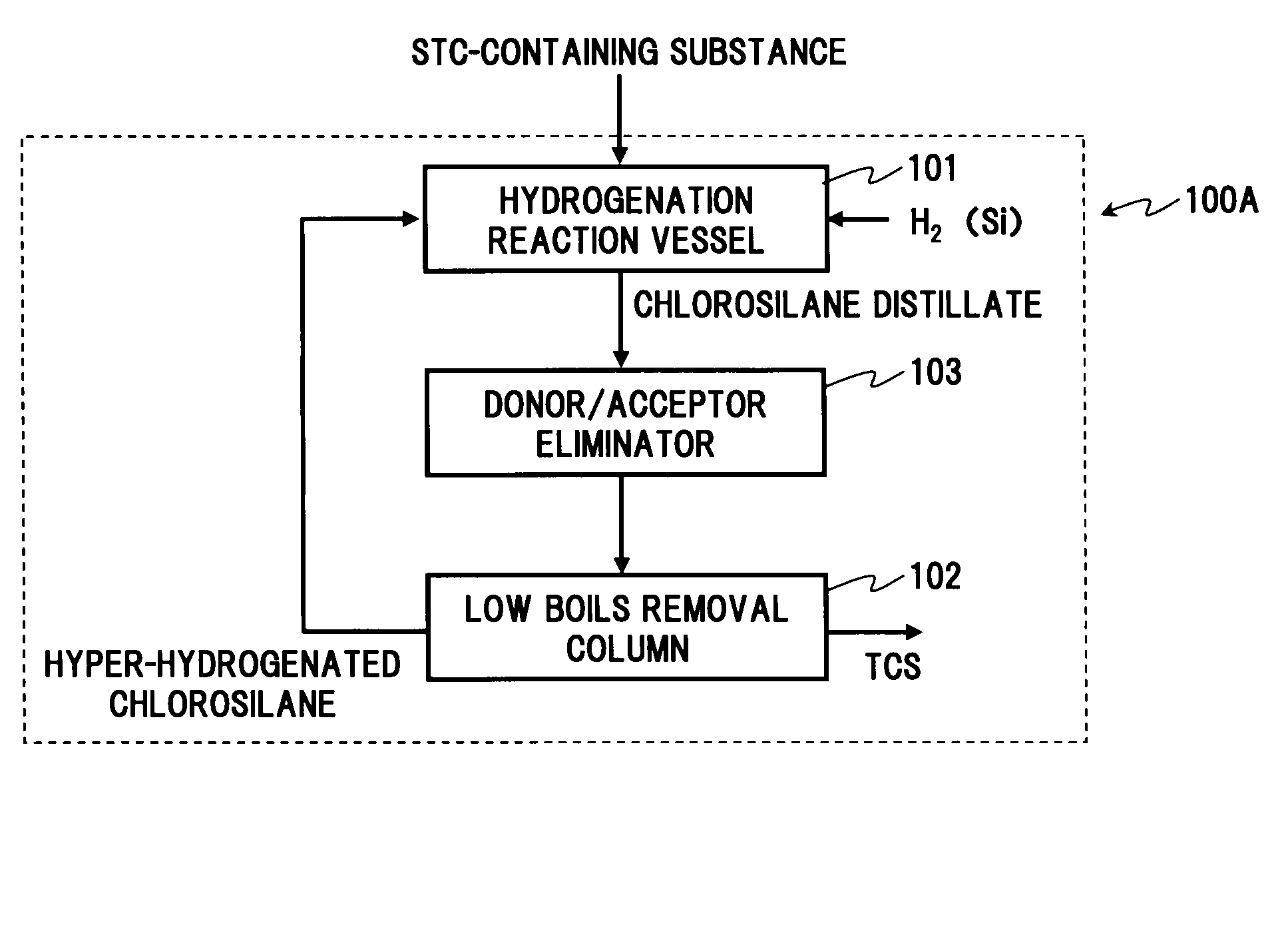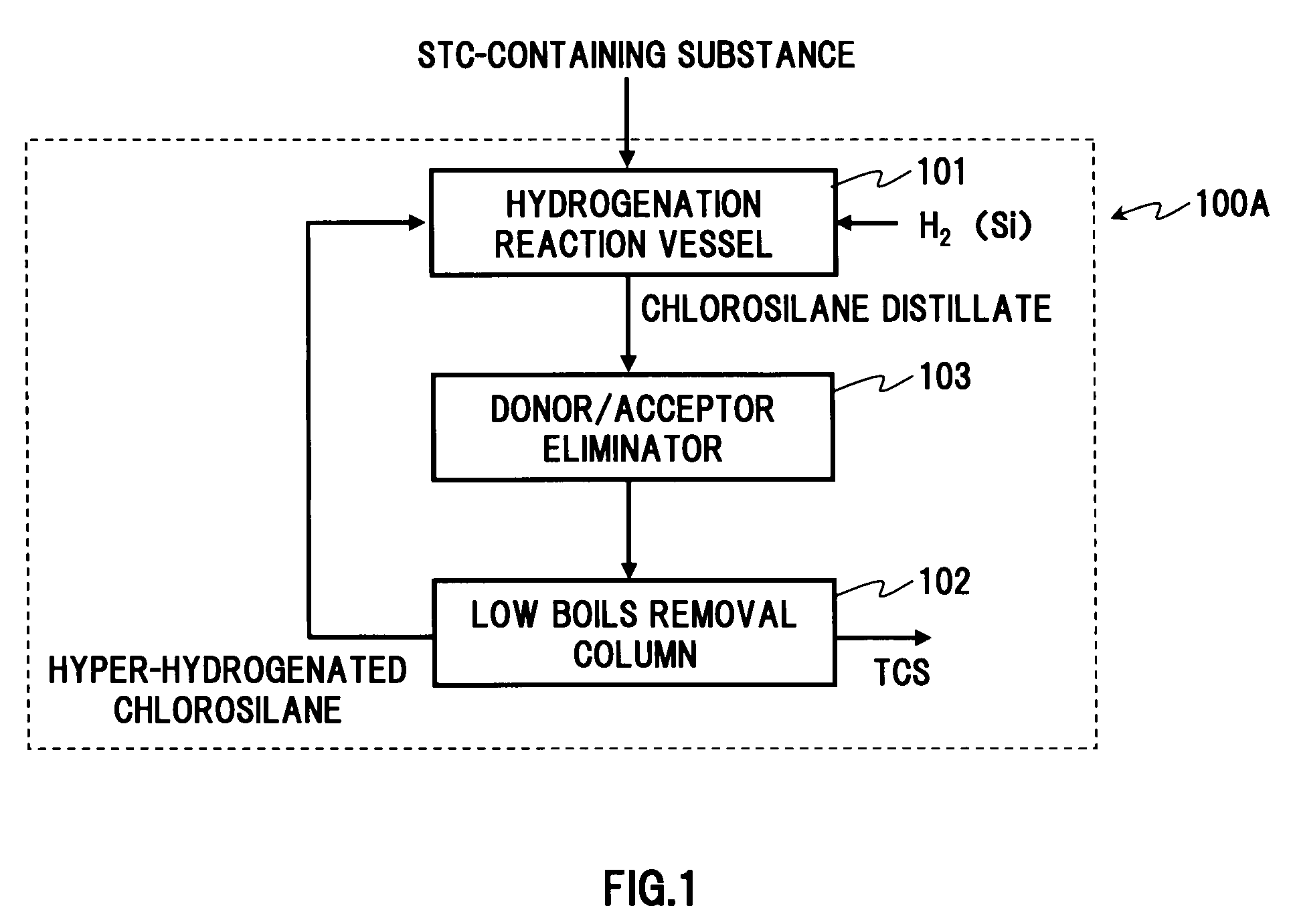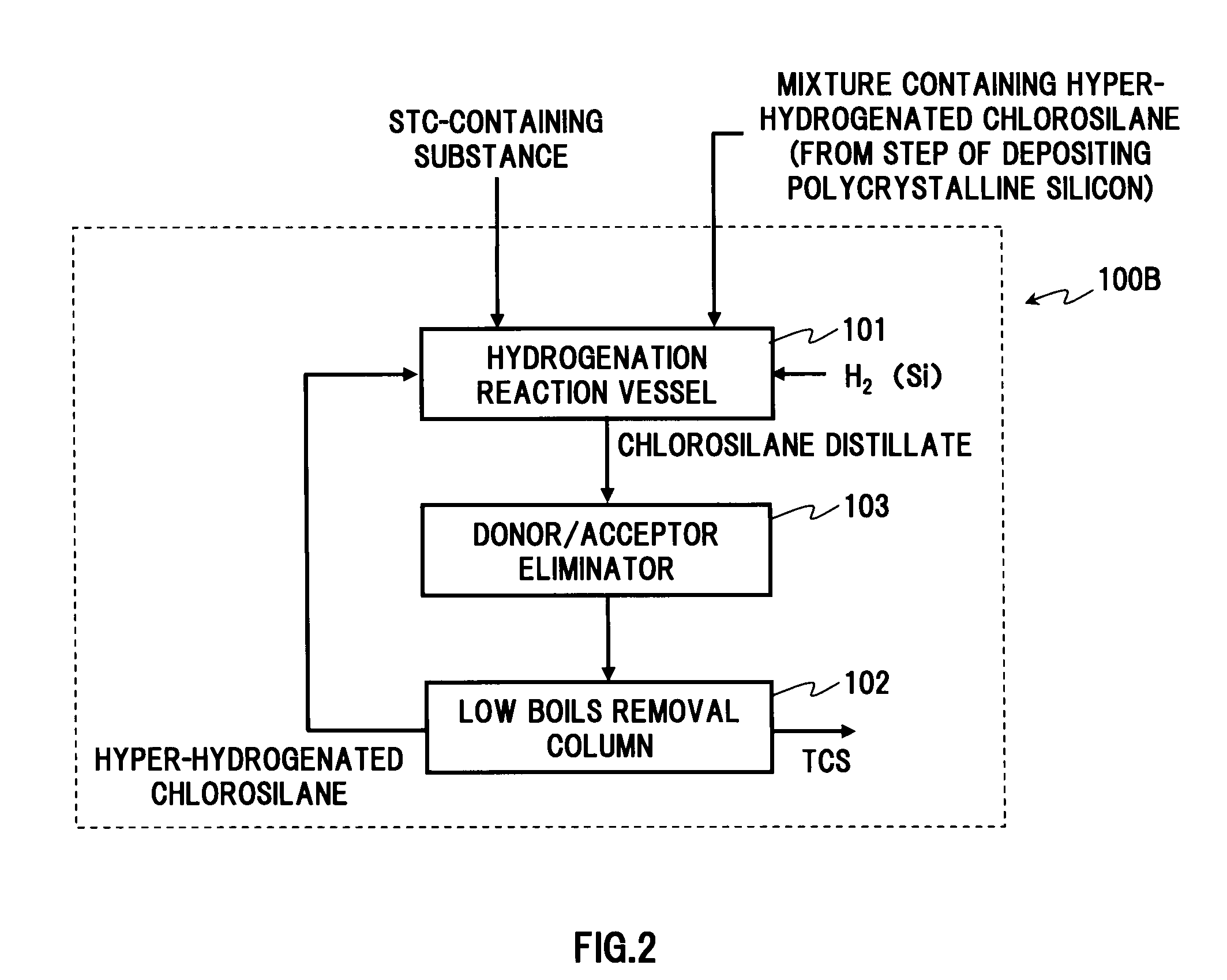Method for producing trichlorosilane and method for producing polycrystalline silicon
a technology of trichlorosilane and polycrystalline silicon, which is applied in the direction of silicon compounds, separation processes, organic chemistry, etc., can solve the problems of reducing the quality of polycrystalline silicon obtained through a deposition reaction and limited recycling range, so as to achieve purification of tcs and production with higher efficiency
- Summary
- Abstract
- Description
- Claims
- Application Information
AI Technical Summary
Benefits of technology
Problems solved by technology
Method used
Image
Examples
example
[0050]FIG. 3 is a view for describing an example of a commercial process for a method for producing polycrystalline silicon according to the present invention. The process for producing polycrystalline silicon includes a step of circulating TCS obtained in a process 100C for producing trichlorosilane according to the present invention to a step (CVD process) 200 for depositing polycrystalline silicon, and making the TCS react with hydrogen.
[0051]STC containing 0.37% poly-silanes as a by-product mixture discharged from the step 200 for depositing polycrystalline silicon and a mixture containing hyper-hydrogenated chlorosilane having a composition including 1.2 wt % MCS, 50.7 wt % DCS and 48.1 wt % TCS were supplied to a hydrogenation reaction vessel 101.
[0052]The STC containing the 0.37% poly-silanes as the by-product mixture discharged from the step 200 for depositing polycrystalline silicon and hydrogen blended by a mole ratio of 1:2 in a gaseous state were supplied to a hydrogenat...
PUM
 Login to View More
Login to View More Abstract
Description
Claims
Application Information
 Login to View More
Login to View More - R&D
- Intellectual Property
- Life Sciences
- Materials
- Tech Scout
- Unparalleled Data Quality
- Higher Quality Content
- 60% Fewer Hallucinations
Browse by: Latest US Patents, China's latest patents, Technical Efficacy Thesaurus, Application Domain, Technology Topic, Popular Technical Reports.
© 2025 PatSnap. All rights reserved.Legal|Privacy policy|Modern Slavery Act Transparency Statement|Sitemap|About US| Contact US: help@patsnap.com



